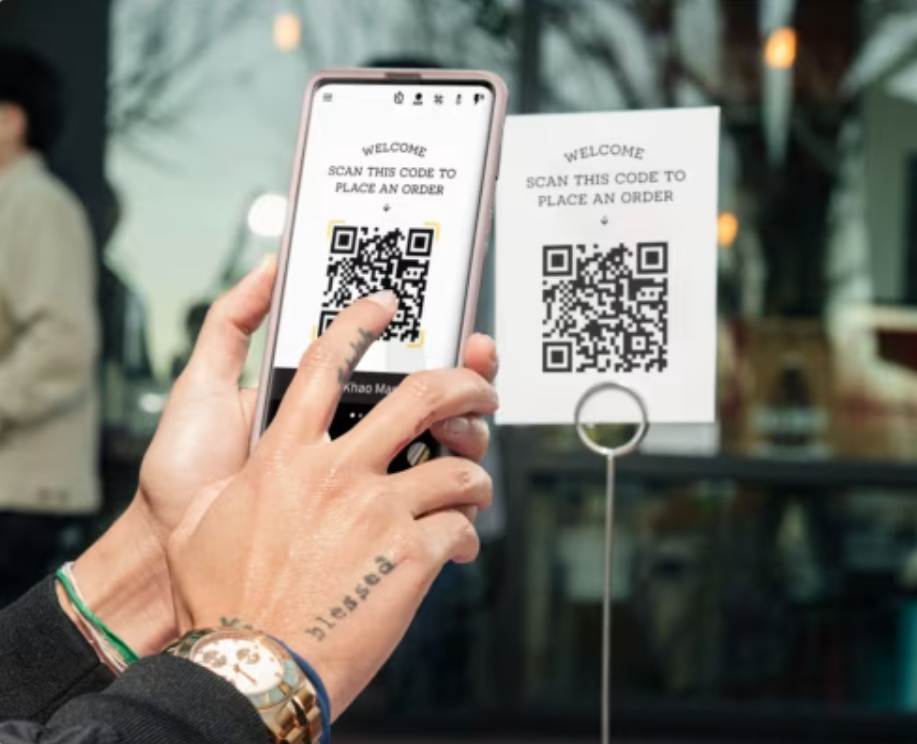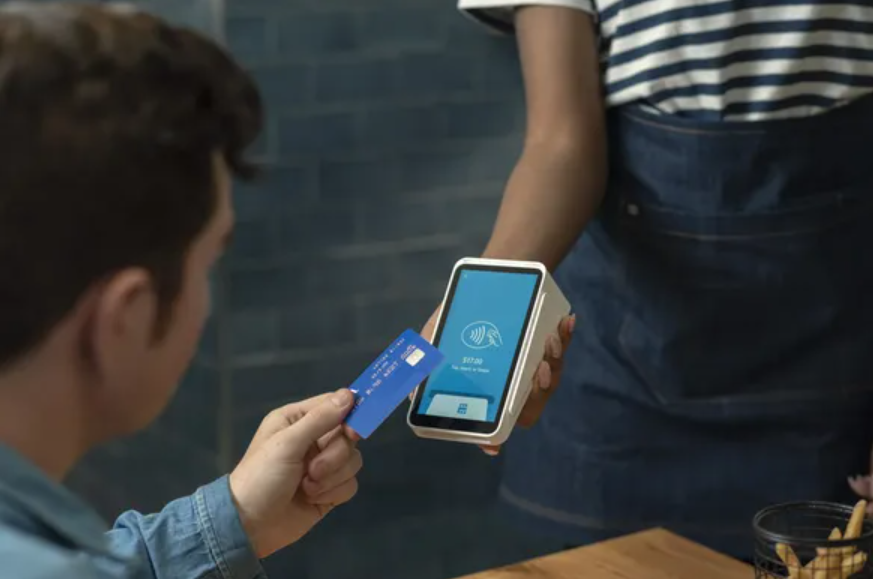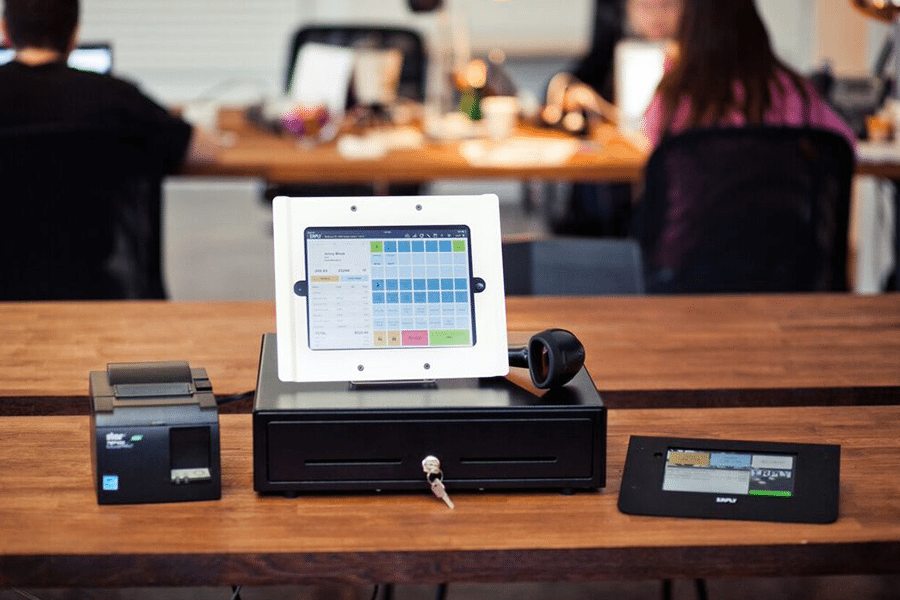Tableside payments refer to the practice of settling restaurant bills directly at the table through the use of devices that integrate with the merchant’s point-of-sale (POS) system. This approach can streamline the payment process, elevate the customer’s overall dining experience, and make restaurant operations faster and more efficient.
The COVID-19 pandemic spurred widespread adoption of tableside payments due to health concerns. This contactless solution not only enhanced safety by minimizing physical contact with menus, credit cards, or cash but also addressed the need for efficiency as restaurants grappled with limited capacities and social distancing measures. Consequently, many dining establishments swiftly embraced tableside payment systems to improve customer safety, reduce wait times, and create a more streamlined and enjoyable dining experience.
According to the National Restaurant Association’s 2022 State of the Restaurant Industry Report, two-thirds of customers are likely to use a tableside tablet for ordering and payment if available.
How Do Tableside Payments Work?
Tableside payments work by integrating technology directly into the dining experience, allowing customers to settle their bills at their tables quickly and conveniently. Here’s a brief overview of how tableside payments typically work:
- Step 1: The customer orders and completes a meal
- Step 2: The customer asks for the bill
- Step 3: The server brings the bill to the client tableside with a wireless point-of-sale (POS) terminal or card reader
- Step 4: The customer’s payment is processed
- Step 5: The customer is asked to authorize the payment if needed
- Step 6: The customer may choose to receive a paper receipt or a digital one that may be sent via email or SMS
While some restaurants still use paper menus during the ordering process, some POS providers make both tableside ordering and payment possible. With tableside ordering, either the restaurant employee brings a handheld device tableside or the customers are provided access to a QR code they can scan to bring them to an ordering page.

Most providers that also offer tableside ordering fully integrate the workflow by sending the orders to the kitchen through a kitchen display system (KDS). This can drastically improve wait times and restaurant efficiency.
How to Choose a Tableside Payment Provider
Selecting the right tableside payment provider is a crucial decision for any restaurant owner or manager. The choice you make can significantly impact your business operations and customer satisfaction. Here are some essential factors to consider when choosing a tableside payment provider:
Compatibility With Your POS System
If you already have a POS system in place, ensure that the tableside payment solution seamlessly integrates with your existing POS system. Compatibility is vital to prevent data discrepancies and operational glitches.
Hardware & Device Options
Evaluate the hardware and device options offered by the provider. Consider factors such as device durability, ease of use, and compatibility with your restaurant’s aesthetics. You may also want to explore whether the provider offers flexibility in choosing between tablets, smartphones, or dedicated payment devices.
Payment Methods Supported
Check which payment methods the provider supports. It’s essential to offer a variety of payment options to cater to your diverse customer base. Ensure that credit cards, debit cards, mobile wallets, and contactless payments (such as QR code payments) are all supported.
Security & Compliance
Prioritize security and compliance with industry standards. Look for a provider that employs robust encryption protocols to protect customer payment data. Compliance with the Payment Card Industry Data Security Standard (PCI DSS) is a must. All your devices, including tableside POS devices, need to be PCI-compliant to avoid having to pay any PCI non-compliance fees.
Ease of Use & Training
Consider the user-friendliness of the system for both staff and customers. A provider that offers comprehensive training and customer support can help your staff quickly adapt to the new technology, reducing the likelihood of errors and service delays.
Cost & Pricing Structure
Understand the provider’s pricing structure. Some providers charge based on a monthly subscription, transaction fees, or a combination of both. Calculate the total cost of ownership, including any hardware expenses, to make an informed decision.
Data Analytics & Reporting
Look for a provider that offers robust data analytics and reporting capabilities. Access to data on customer preferences, order trends, and performance metrics can help you make data-driven decisions to improve your restaurant’s operations.
Reliability & Support
Assess the provider’s reliability by researching their uptime history and reading customer reviews. Reliable support is also crucial; ensure they offer responsive customer support to address any issues promptly.
Scalability
Consider your restaurant’s growth potential. Will the tableside payment solution scale with your business as you expand? Scalability is essential to accommodate increased customer traffic and additional locations.
Customer Feedback & Reviews
Research customer feedback and reviews for insights into the provider’s reputation and the experiences of other restaurant owners. This can provide valuable insights into the provider’s strengths and weaknesses.
Contract Terms
Thoroughly review the contract terms, including any minimum commitments or termination fees. Ensure you can cancel anytime if you decide to switch providers in the future.
Benefits of Tableside Payments
Tableside payments offer a multitude of benefits for both customers and merchants. Here’s a closer look at these advantages:
Improved Customer Experience
One of the most significant advantages of tableside payments is the enhancement of the overall dining experience. Customers no longer need to wait for the server to bring the bill, process the payment on a central POS, and bring back the receipt—everything occurs tableside, which reduces the time spent waiting and allows for a more seamless and satisfying dining experience.
If the system is equipped with tableside ordering and integrated with kitchen operations, orders are immediately relayed to the kitchen staff, also reducing the time spent waiting for the order to be prepared. It also allows out-of-stock items to be updated on the ordering system immediately. This means that as soon as a dish or drink is sold out or a special is introduced, it can be reflected in the digital menu. This keeps customers informed and prevents disappointment when ordering.
According to the May-June 2022 Digital Divide Report, 55.7% of Generation Z and 53.3% of millennial customers believe that viewing a menu with a QR code has a positive impact on their satisfaction
Faster & More Efficient Payment Process
Tableside payments significantly speed up the payment process. With the ability to settle the bill right at the table, diners can leave promptly when they’re ready, without the need for extra back-and-forth with servers or waiting in line at the cash register.

Personalized Experience
Tableside payment systems often collect valuable data about customer preferences, order history, and dining habits. Restaurants can use this data to tailor marketing campaigns, create personalized offers, and improve menu offerings based on customer feedback.
Increased Sales
The convenience of tableside payments can lead to increased sales by increasing cover counts. With a faster turnover of tables, restaurants can serve more customers during peak hours, ultimately boosting revenue. They allow servers to efficiently close out tables, seat new customers, and maintain a steady flow of diners. Moreover, the ability to add items to the bill easily can encourage customers to order more, increasing the average check size.
Varied Different Payment Methods
Most tableside payment systems cater to a variety of payment methods, including credit cards, debit cards, mobile wallets, and contactless payments. This flexibility ensures that customers can pay using their preferred method, making the transaction process more convenient for everyone.
Enhanced Accuracy
Traditional payment processes may be prone to errors in bill calculation or payment handling. Tableside payments eliminate these errors by automating the calculation and payment process, ensuring that customers are charged correctly.
Improved Staff Efficiency
Servers can spend less time processing payments and more time attending to customer needs, providing better service overall. This can lead to higher tips and greater job satisfaction among restaurant staff.
Tableside payments and ordering can help improve some of your key restaurant metrics such as ticket time, labor cost, customer retention rate, and customer lifetime value.
Tips & Best Practices for Tableside Payments
Implementing tableside payments in your restaurant can be a game-changer for your business, but it’s essential to ensure a smooth transition and optimal usage. Here are some tips and best practices to consider:
Invest in the Right Device
Carefully select the tableside payment device that suits your restaurant’s needs. Consider factors like durability, ease of use, and compatibility with your POS system. Ensure that the device provides a seamless and efficient payment experience for both staff and customers.
Train Your Staff
Comprehensive staff training is essential to the successful implementation of tableside payments. Ensure that your servers and front-of-house staff are proficient in using the devices and the payment process. Training should include troubleshooting common issues and ensuring data security practices.
Educate Your Customers
Not all diners may be familiar with tableside payments, so it’s crucial to educate them on how the process works. Consider placing informative signage or cards on tables, explaining the benefits of tableside payments and how to request and complete the payment. Highlight the security and ease of these payment methods to put customers at ease.
Create Rewards or Incentives
To encourage customers to use tableside payments, consider implementing a rewards or loyalty program tied to this payment method. Offer discounts, special promotions, or loyalty points for customers who choose to settle their bills using tableside payments. This can incentivize repeat visits and increase customer engagement.
Monitor & Improve Efficiency
Continuously monitor the efficiency of your tableside payment process. Analyze data on transaction times, customer feedback, and staff performance to identify areas for improvement. Make adjustments as needed to streamline the process further.
Prioritize Data Security
Emphasize the importance of data security to both staff and customers. Ensure that your tableside payment provider and devices are PCI-compliant and adhere to industry standards for secure transactions. Communicate your commitment to protecting customer data to build trust.
Regularly Update Your System
Stay current with software updates and system improvements provided by your tableside payment provider. These updates often include bug fixes, security enhancements, and new features that can benefit your restaurant and customers.
Gather Feedback
Actively seek feedback from both customers and staff regarding their experiences with tableside payments. Use this feedback to make informed decisions about system improvements and training adjustments.
Frequently Asked Questions (FAQs)
Click through the sections below to learn more about the most common questions we get about tableside payments.
Last Bite
Tableside payments have revolutionized the dining experience, offering numerous advantages for both customers and restaurant owners. They enhance customer satisfaction by speeding up bill settlement, providing real-time menu updates, and enabling personalized experiences.
Additionally, they contribute to increased sales and staff efficiency, making restaurants more profitable and efficient.
To harness the full potential of tableside payments, businesses should choose a compatible provider, invest in staff training, educate customers, and explore loyalty programs. With the added convenience and safety these systems offer, tableside payments will remain in the restaurant industry long after the pandemic’s influence subsides.



